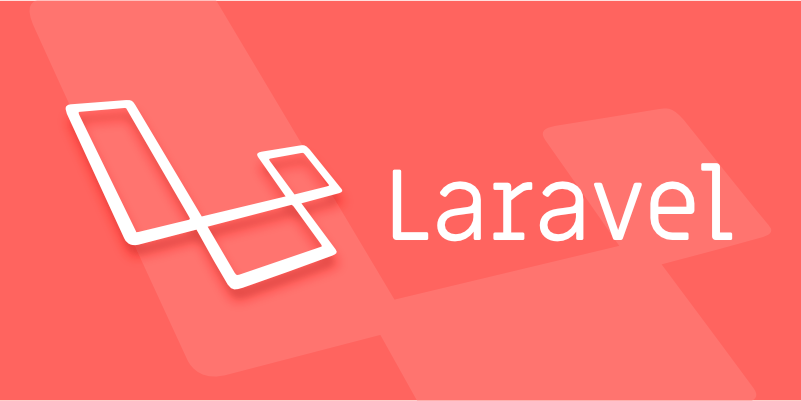How to add localization and translation to a Laravel app?
Jul 28, 2025 am 01:57 AMCreate language files and store them in the resources/lang directory, such as en/messages.php and es/messages.php, or use JSON files; 2. Dynamically set the application language through middleware or URL prefixes, such as reading URL segments or languages in sessions using SetLocale middleware; 3. Call translations using the __() helper function or @lang directive in views and code, such as __('messages.welcome'); 4. Support translations with variables and plural forms, such as 'welcome_user' => 'Welcome, :name!' and '{0} No posts|{1} One post|[2,*] :count posts'; 5. Configure fallback_locale to handle missing translations, and optionally use barryvdh/laravel-translation-manager and other packages to manage translations; 6. The translation management package can be installed through Composer to realize web interface editing and exporting translations. Through the above steps, Laravel applications can easily achieve multilingual support, with flexibility and good scalability.

Adding localization and translation to a Laravel app is straightforward thanks to Laravel's built-in support for multiple languages. Here's how you can set it up effectively.

1. Set Up Language Files
Laravel stores translations in the resources/lang directory. Each language has its own subdirectory (eg, en , es , fr ).
Example structure:

/resources
/lang
/en
messages.php
/es
messages.phpCreate a translation file:
// /resources/lang/en/messages.php
Return [
'welcome' => 'Welcome to our application',
'goodbye' => 'Goodbye, see you soon',
];
// /resources/lang/es/messages.php
Return [
'welcome' => 'Bienvenido a nuestra aplicación',
'goodbye' => 'Adiós, hasta pronto',
];You can also use JSON files for single translations (Laravel 9):

// resources/lang/es.json
{
"Welcome to our application": "Bienvenido a nuestra aplicación",
"Goodbye, see you soon": "Adiós, hasta pronto"
}2. Detect and Set the Application Locale
You can set the app language dynamically using middleware or user preferences.
Option A: Set locale globally (for testing)
// In a controller or RouteServiceProvider App::setLocale('es');
Option B: Use middleware to set locale from URL or session
Create a middleware:
php artisan make:middleware SetLocale
In SetLocale.php :
public function handle($request, \Closure $next)
{
$locale = $request->segment(1); // eg, /es/dashboard
if (in_array($locale, ['en', 'es', 'fr'])) {
app()->setLocale($locale);
session()->put('locale', $locale);
} elseif (session()->has('locale')) {
app()->setLocale(session('locale'));
}
return $next($request);
} Register the middleware in app/Http/Kernel.php :
protected $middlewareGroups = [
'web' => [
\App\Http\Middleware\SetLocale::class,
// ... other middleware
],
];Then group your routes:
Route::group(['prefix' => '{locale?}'], function () {
Route::get('/dashboard', [DashboardController::class, 'index']);
Route::get('/', [HomeController::class, 'index']);
});This way, visiting
/eswill show Spanish content.
3. Use Translations in Views and Code
Laravel provides several ways to retrieve translations.
Using the __() helper:
<h1>{{ __('messages.welcome') }}</h1>
<p>{{ __('Goodbye, see you soon') }}</p> Using @lang Blade directive:
<p>@lang('messages.goodbye')</p>
In PHP code:
echo __('messages.welcome');
Note: If using JSON translations, use the full text as the key:
__('Welcome to our application').
4. Pluralization and Variables
For dynamic content, use placeholders and pluralization.
Translation file with variables:
// resources/lang/en/messages.php
'welcome_user' => 'Welcome, :name!',
'posts' => '{0} No posts|{1} One post|[2,*] :count posts',Usage:
{{ __('messages.welcome_user', ['name' => 'John']) }}
{{ __('messages.posts', ['count' => $count]) }}5. Fallback and Missing Translations
- Laravel uses the
fallback_locale(inconfig/app.php) if a translation doesn't exist. - You can also log missing translations using packages like barryvdh/laravel-translation-manager for easier management.
6. Optional: Use a Package for Admin Management
For larger apps, consider using a package to manage translations via UI:
- Laravel Translation Manager
- Scans your app for translation keys
- Provides a web interface to edit translations
- Exports back to language files
Install via Composer:
composer requires barryvdh/laravel-translation-manager
Follow package instructions to register and configure.
Summary
- Store translations in
resources/lang/{locale}/ - Use
__()or@lang()in views - Set locale dynamically via middleware or session
- Support variables and pluralization
- Optionally use a package for managing translations
With these steps, your Laravel app can easily support multiple languages. Basically, it's flexible, built-in, and scales well with your needs.
The above is the detailed content of How to add localization and translation to a Laravel app?. For more information, please follow other related articles on the PHP Chinese website!

Hot AI Tools

Undress AI Tool
Undress images for free

Undresser.AI Undress
AI-powered app for creating realistic nude photos

AI Clothes Remover
Online AI tool for removing clothes from photos.

Clothoff.io
AI clothes remover

Video Face Swap
Swap faces in any video effortlessly with our completely free AI face swap tool!

Hot Article

Hot Tools

Notepad++7.3.1
Easy-to-use and free code editor

SublimeText3 Chinese version
Chinese version, very easy to use

Zend Studio 13.0.1
Powerful PHP integrated development environment

Dreamweaver CS6
Visual web development tools

SublimeText3 Mac version
God-level code editing software (SublimeText3)

Hot Topics
 Creating Custom Validation Rules in a Laravel Project
Jul 04, 2025 am 01:03 AM
Creating Custom Validation Rules in a Laravel Project
Jul 04, 2025 am 01:03 AM
There are three ways to add custom validation rules in Laravel: using closures, Rule classes, and form requests. 1. Use closures to be suitable for lightweight verification, such as preventing the user name "admin"; 2. Create Rule classes (such as ValidUsernameRule) to make complex logic clearer and maintainable; 3. Integrate multiple rules in form requests and centrally manage verification logic. At the same time, you can set prompts through custom messages methods or incoming error message arrays to improve flexibility and maintainability.
 Adding multilingual support to a Laravel application
Jul 03, 2025 am 01:17 AM
Adding multilingual support to a Laravel application
Jul 03, 2025 am 01:17 AM
The core methods for Laravel applications to implement multilingual support include: setting language files, dynamic language switching, translation URL routing, and managing translation keys in Blade templates. First, organize the strings of each language in the corresponding folders (such as en, es, fr) in the /resources/lang directory, and define the translation content by returning the associative array; 2. Translate the key value through the \_\_() helper function call, and use App::setLocale() to combine session or routing parameters to realize language switching; 3. For translation URLs, paths can be defined for different languages ??through prefixed routing groups, or route alias in language files dynamically mapped; 4. Keep the translation keys concise and
 Working with pivot tables in Laravel Many-to-Many relationships
Jul 07, 2025 am 01:06 AM
Working with pivot tables in Laravel Many-to-Many relationships
Jul 07, 2025 am 01:06 AM
ToworkeffectivelywithpivottablesinLaravel,firstaccesspivotdatausingwithPivot()orwithTimestamps(),thenupdateentrieswithupdateExistingPivot(),managerelationshipsviadetach()andsync(),andusecustompivotmodelswhenneeded.1.UsewithPivot()toincludespecificcol
 Sending different types of notifications with Laravel
Jul 06, 2025 am 12:52 AM
Sending different types of notifications with Laravel
Jul 06, 2025 am 12:52 AM
Laravelprovidesacleanandflexiblewaytosendnotificationsviamultiplechannelslikeemail,SMS,in-appalerts,andpushnotifications.Youdefinenotificationchannelsinthevia()methodofanotificationclass,andimplementspecificmethodsliketoMail(),toDatabase(),ortoVonage
 Understanding and creating custom Service Providers in Laravel
Jul 03, 2025 am 01:35 AM
Understanding and creating custom Service Providers in Laravel
Jul 03, 2025 am 01:35 AM
ServiceProvider is the core mechanism used in the Laravel framework for registering services and initializing logic. You can create a custom ServiceProvider through the Artisan command; 1. The register method is used to bind services, register singletons, set aliases, etc., and other services that have not yet been loaded cannot be called; 2. The boot method runs after all services are registered and is used to register event listeners, view synthesizers, middleware and other logic that depends on other services; common uses include binding interfaces and implementations, registering Facades, loading configurations, registering command-line instructions and view components; it is recommended to centralize relevant bindings to a ServiceProvider to manage, and pay attention to registration
 Understanding Dependency Injection in Laravel?
Jul 05, 2025 am 02:01 AM
Understanding Dependency Injection in Laravel?
Jul 05, 2025 am 02:01 AM
Dependency injection automatically handles class dependencies through service containers in Laravel without manual new objects. Its core is constructor injection and method injection, such as automatically passing in the Request instance in the controller. Laravel parses dependencies through type prompts and recursively creates the required objects. The binding interface and implementation can be used by the service provider to use the bind method, or singleton to bind a singleton. When using it, you need to ensure type prompts, avoid constructor complications, use context bindings with caution, and understand automatic parsing rules. Mastering these can improve code flexibility and maintenance.
 Strategies for optimizing Laravel application performance
Jul 09, 2025 am 03:00 AM
Strategies for optimizing Laravel application performance
Jul 09, 2025 am 03:00 AM
Laravel performance optimization can improve application efficiency through four core directions. 1. Use the cache mechanism to reduce duplicate queries, store infrequently changing data through Cache::remember() and other methods to reduce database access frequency; 2. Optimize database from the model to query statements, avoid N 1 queries, specifying field queries, adding indexes, paging processing and reading and writing separation, and reduce bottlenecks; 3. Use time-consuming operations such as email sending and file exporting to queue asynchronous processing, use Supervisor to manage workers and set up retry mechanisms; 4. Use middleware and service providers reasonably to avoid complex logic and unnecessary initialization code, and delay loading of services to improve startup efficiency.
 Handling exceptions and logging errors in a Laravel application
Jul 02, 2025 pm 03:24 PM
Handling exceptions and logging errors in a Laravel application
Jul 02, 2025 pm 03:24 PM
The core methods for handling exceptions and recording errors in Laravel applications include: 1. Use the App\Exceptions\Handler class to centrally manage unhandled exceptions, and record or notify exception information through the report() method, such as sending Slack notifications; 2. Use Monolog to configure the log system, set the log level and output method in config/logging.php, and enable error and above level logs in production environment. At the same time, detailed exception information can be manually recorded in report() in combination with the context; 3. Customize the render() method to return a unified JSON format error response, improving the collaboration efficiency of the front and back end of the API. These steps are






